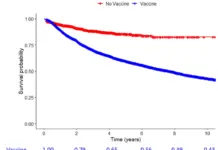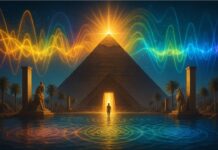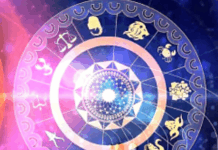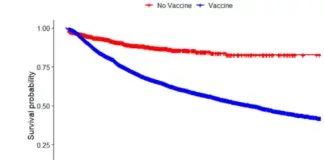Cancer is Fungus and curable with Baking soda part1
youtube: cancer is a fungus – there are so many you tube’s to choose from
Dr. Simoncini cancer therapy – treat cancer with Sodium Bicarbonate.
Dr. Simoncini is a roman doctor specialising in oncology, diabetology and in metabolic disorders.
Cancer is a fungus The book “Cancer is a fungus” describes how a fungous infection always forms the basis of every neoplastic formation, and this formation tries to spread within the whole organism without stopping.
But Some estimates currently attribute 15% to 20% of all cancers to infectious pathogen causes.[45][46] In future, this percentage may be revised upwards if the pathogens currently associated with cancers (such as those listed below) are proven to actually cause those cancers. (Note: for the sake of completeness, some infectious pathogens known to cause cancers are included in the list, in addition to the infectious pathogens associated with cancers.)
Adrenal tumor is associated with BK virus and simian virus 40.[47] Anal cancer is associated with human papillomaviruses.[48]
Breast cancer is associated with mouse mammary tumor virus, Epstein-Barr virus, and human papillomaviruses.[52]
Liver cancer. Hepatocellular carcinoma can be caused by hepatitis B virus, hepatitis C virus,[63] and by the helminth Schistosoma japonicum.[64] Lung cancer is associated with the bacterium Chlamydia pneumoniae,[65] with human papillomaviruses, and with Merkel cell polyomavirus.[66] Leukemia. Adult T-cell leukemia can be caused by human T-cell leukemia virus-1. Mesothelioma is associated with simian virus 40,[67] especially in conjunction with asbestos exposure. Non-Hodgkin lymphoma is associated with HIV and simian virus 40.[68] Ovarian cancer is associated with mumps virus. Pancreatic cancer is associated with hepatitis B virus and the bacterium Helicobacter pylori. Prostate cancer is associated with xenotropic murine leukemia virus-related virus and BK virus. Stomach cancer is associated with the bacterium Helicobacter pylori. Thyroid cancer is associated with simian virus 40.
How important bicarbonate and being alkaline
Stomach
Sodium Bicarbonate is made in the stomach. For every molecule of sodium bicarbonate produced in the stomach, an equal amount of HCL is produced. HCL acid is a waste product of sodium bicarbonate production. The formula is NaCL + H2O + CO2 = NaHCO3 + HCL. The sodium bicarbonate in the stomach creates even more alkalization of the food in the stomach and prepares it to be transformed into stem cells in the small intestine. The HCL acid falls into the gastric pits away from the food. The normal pH of the stomach with food is 7.2 or higher. Yes, you can drink alkaline water with your meals to buffer or neutralize the poisonous HCL.
Pancreas – Pancreatic Juice
Pancreatic juice contains sodium bicarbonate which neutralizes the acidic material from the stomach.
Brunner’s glands
Brunner’s glands (or duodenal glands) are compound tubular submucosal glands found in that portion of the duodenum which is above the hepatopancreatic sphincter (Sphincter of Oddi). The main function of these glands is to produce a mucus-rich alkaline secretion (containing bicarbonate) in order to: protect the duodenum from the acidic content of chyme (which is introduced into the duodenum from the stomach); provide an alkaline condition for the intestinal enzymes to be active, thus enabling absorption to take place; lubricate the intestinal walls. They also secrete urogastrone, which inhibits parietal and chief cells of the stomach from secreting acid and their digestive enzymes. This is another form of protection for the duodenum. They are the distinguishing feature of the duodenum, and are named for the Swiss physician who first described them, Johann Conrad Brunner.
Liver – Bile
Bile has a golden colour and is nearly isotonic with blood plasma. The bile contains NaCl and bicarbonate in concentrations similar to those of plasma, but the bile contains more Ca2+ (bound to bile acids) than plasma. We normally produce 0.5-1 litre of hepatic bile per day with bile salts, lecithin, cholesterol and 1.5 g of bile pigments.
The liver secretes bile, which is stored in the gall bladder between meals. During digestion, bile is excreted along the bile duct (from the gall bladder) and the hepatic duct (from the liver) into the duodenum (the first part of the small intestine).
Bile is an aqueous mixture containing several substances, including bicarbonate ions to neutralize the acidic chyme arriving from the stomach, and bile salts to emulsify fats in the first stage of their breakdown.
Kidneys Produce Bicarbonate
The kidneys alone produce about two hundred and fifty grams (about half a pound) of bicarbonate per day in an attempt to neutralize acid in the body.
Bicarbonate ions neutralize the acid conditions required for chronic inflammatory reactions. Hence, sodium bicarbonate is of benefit in the treatment of a range of chronic inflammatory and autoimmune diseases. Sodium bicarbonate is a well studied and used medicine with known effects.
Disclaimer: We at Prepare for Change (PFC) bring you information that is not offered by the mainstream news, and therefore may seem controversial. The opinions, views, statements, and/or information we present are not necessarily promoted, endorsed, espoused, or agreed to by Prepare for Change, its leadership Council, members, those who work with PFC, or those who read its content. However, they are hopefully provocative. Please use discernment! Use logical thinking, your own intuition and your own connection with Source, Spirit and Natural Laws to help you determine what is true and what is not. By sharing information and seeding dialogue, it is our goal to raise consciousness and awareness of higher truths to free us from enslavement of the matrix in this material realm.
 EN
EN


























